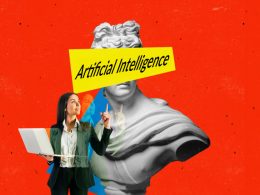A firm’s value chain can be transformed digitally by utilizing cutting-edge technology and data-driven insights.
In order to enable business objectives of increasing revenue and reducing costs, improving operating and workforce efficiencies, and redefining the business model of the organization, digital transformation is leveraging new age technologies and data-driven insights across the entire value chain of an organization. We can observe a convergence between old information technologies and new generation digital technologies (DT) as this transformation journey rapidly changes the technological landscape (IT).
These digital technologies are gaining popularity as time goes on. Without the participation of the core IT teams, what was earlier assumed to be exclusively digital projects and driven by businesses have started to fail. These projects and solutions also made problems with the old systems more visible, which led to adjustments or investments in newer systems. For instance, if the master vendor information in their ERP system is unreliable or lacking, an automation project that needs to process invoices and enter them may fail. On the other hand, appropriate process tools (to obtain the requisite governance and approvals) and automation tools allow for the real-time updating and correction of the same vendor information in the vendor master (to update the systems). What we observe is that problems can be found and fixed by effectively integrating digital technology with legacy systems. For any data, automation, or transformation journey to be successful, it is essential for both the IT and business teams to be involved, and the integration of the DT and IT environments is now required, according to the majority of the clients. The convergence of the technology providers has begun as this integration becomes increasingly necessary. Technology behemoths that were once highly powerful in one or more product categories are now adding new goods through natural or artificial means and providing a platform narrative. The goal is to build a platform that can provide clients a wide range of services that are all connected to deliver a smooth user experience and an intelligent process. Some OEM companies who began as pure-play providers of process automation tools expanded the scope of their product offerings to include application development, process mining, and artificial intelligence. Let’s look at yet another illustration where we examine the procedures required to implement an intelligent account payment process. To extract the necessary information for the clients from the invoices, optical character recognition (OCR) and natural language processing (NLP) are needed. A platform (BPM/RPA/RADT) is then needed to allow users to approve and validate, park, and post those invoices in the ERP systems (RPA/API), and process payments (RPA/API). There are numerous options for technologies at each stage, and for each technology selected, there are numerous instruments available to get the desired outcome. The required digital technologies and the already installed IT systems must be integrated with the intended solution. There are also product enterprises, such as Salesforce, who began as a CRM product company but decided to build their platform story through inorganic acquisitions of the integration/middleware company MuleSoft and the analytics/visualization platform Tableau. Finally, some of the traditional software developers, such as Microsoft, have now entered the cloud data platform and AI with Azure Data Factory on the one hand and with the power platform, using application development (power apps), automation (Power automate), and Power BI (for data visualisation) on the other, to offer a full suite of services to the enterprises.
In conclusion, it is critical for enterprises to comprehend this confluence and make it work for their business as they get ready for their own transformation journeys. These firms must comprehend the current technologies or platforms that are available to them so they may gain the necessary competitive advantage in their industry. Regardless of their level of digital maturity, every organization must develop a roadmap to take advantage of this for the benefit of its clients. However, it’s important to keep in mind that technology is merely an enabler; in order to benefit from the convergence of technologies in a world that is undergoing digital transformation, one needs the proper people, including the right leadership and organizational culture.







